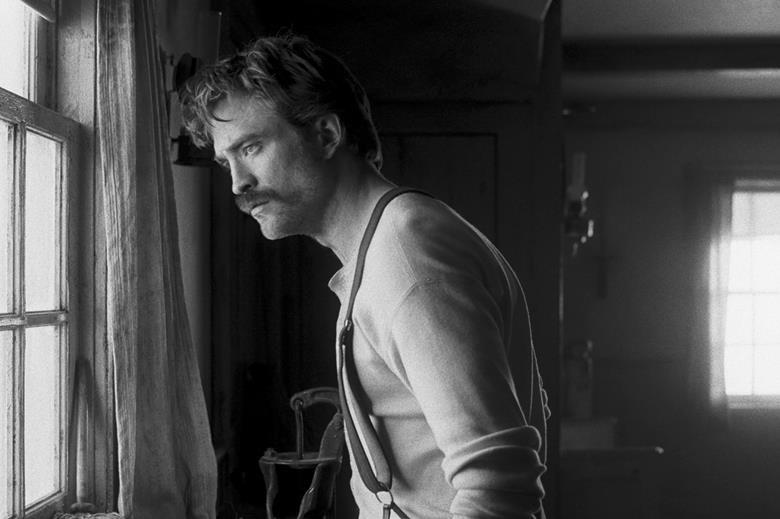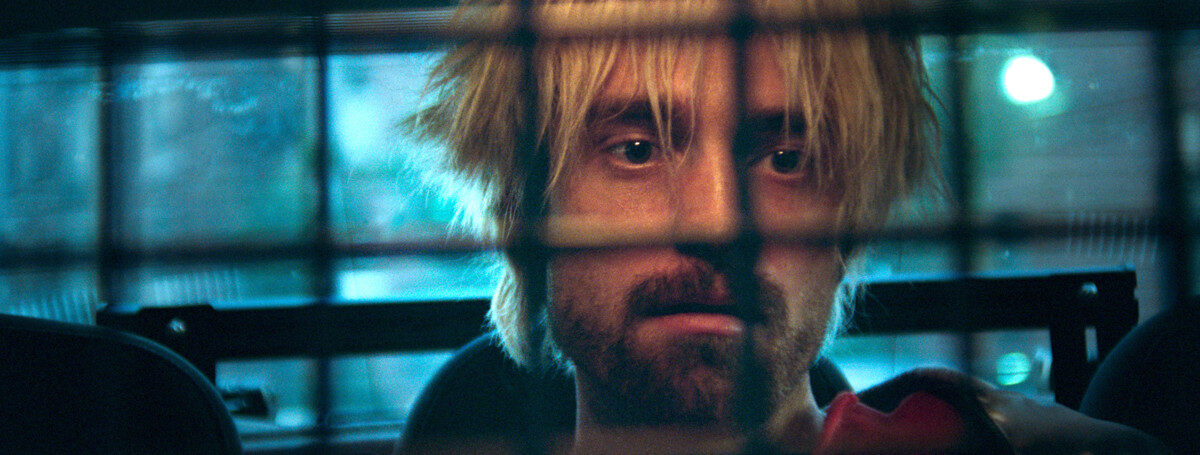From Cullen to criminal to Caped Crusader, few can deny the cultural staying power of Robert Pattinson. But unlike many actors from similar circumstances, Pattinson’s particular star image is elusive and inconsistent. What is it about the former Twilight star turned indie icon that’s so hard to pin down?

It’s hard to classify the allure of Robert Pattinson. Four of his films involve masturbation. Five involve vampires. A photo of him in a kitchen has turned into a viral internet meme. Soon, he will be Batman.
The confusing magnetism of Robert Pattinson is a direct result of this deliberately strange career. He wildly oscillates between indie and mainstream roles, always dodging out of the spotlight. His on- and off- screen personae both serve to muddy the waters on what film theorist Richard Dyer would describe as his ‘star image’, resisting the normalising influence of mass media cultures. In this article, we’re going to take a look at how a typical film star is constructed. From there, we’ll see how Pattinson (perhaps inadvertently) avoids being pigeonholed.
Constructing a Star
According to Dyer, stars are a set of paradoxes. They must, first and foremost, be both ordinary and extraordinary. They are relatable, but also capable of greater emotions and self-expression that we, the consumer, are incapable of reaching ourselves. Whether their ‘real’ personality and character matches up with this persona actually tends not to matter.
What is significant is that the idea of this person becomes a commodity that is traded as freely as the products, be it films, songs or other media, that they are central figures in. This commodified persona must constantly grow and change, but retain this core duality at all costs.

As well as this, the star must be both there and not there. They must be constantly inviting us into their lives, but never actually show us behind the curtain. Social media allows for near-constant engagement by stars with their fans, but in an entirely controlled and curated way. For the vast majority of stars’ fans, all they will interact with is this commodified persona, whose appearance in films, TV or other media provides consumers with an incentive to purchase or otherwise engage with it.
A Branded Persona
The reasons for film and media cultures’ construction of stars is self-evident. They are extremely effective mouthpieces for brands, commodities and lifestyles. Film stars guarantee success at the box office to a degree that no other part of the filmmaking process can. They also serve as an ideal for broader society to measure itself against. This might be in relation to wealth, physical appearance or artistic expression.
Arguably every very successful star in any medium in the last fifty years has such a persona, enhanced and developed by their appearances in films, interviews or other public appearances. While the nature of these star personas change, it is usually consistent with their existing character.
With that in mind, let’s turn to Robert Pattinson… who fulfils almost none of these archetypes.
How, you ask?
Starting Out

Following his breakout role as Cedric Diggory in Harry Potter and the Goblet of Fire in 2005, Pattinson’s career exploded with his casting as Edward Cullen in Twilight (2008). An immediate hearthrob for teen audiences, ‘RPatz’ and co-star Kristen Stewart’s relationship placed a permanent paparazzi spotlight on him, one he would struggle to escape in the coming years. Unlike many actors in similar circumstances, Pattinson refused to be pigeonholed.
There are many factors in his tacit resistance to the conventional star archetype. The first and most tangible is his distancing himself from the Twilight Saga. Pattinson’s contempt for the story, the script and the production of these films has been a subject of mirth for fans and haters of the series alike.
By the end of the series’ production, he had emotionally moved on, and was eager to try new roles. He discussed in GQ his fear of typecasting:
“Because you get categorized quite quickly just by the way you look,” he says. “And so if you’re a tall, kind of floppy-haired English guy, went to private school, and you start acting, well, you’re in period dramas. But I don’t like period dramas. And so you fight against that.”
Going Underground
After Twilight, he featured in a string of arthouse films, playing a number of wildly different characters to both Edward and one another. Through the 2010s he worked with well-respected and experimental directors like Claire Denis, David Cronenberg, Robert Eggers and the Safdie Brothers, all of whom pulled him in different directions. Playing criminals, vagrants and an increasingly deranged lighthouse keeper, his castings avoid any particular archetype.

Of course, the arthouse scene is just as guilty of creating star personas as more mainstream markets. It would be incorrect to suggest that they are immune from these same impulses. In Pattinson’s case, however, his pre-existing image (a teenage heartthrob) overshadowed a lot of his work, ensuring that rather than defining his persona, these roles only served to muddy the waters.
Alongside this is his work in the fashion world, where he has shown a flair for, again, a wide range of aesthetics, styles and formats. The through-line continues – not a suave suit type, not an experimental fashion type, not a model, not not a model… Throughout he has taken control of his own image, and shows a desire always to innovate, to adapt, to grow.
With Tenet and The Batman, Pattinson returns to the mainstream film circuit. Many won’t be familiar with his work in films like High Life, Good Time or The Lighthouse, but memories of Twilight persist. Discourse within superhero fan circles is divided on his casting as Batman, especially given his disdain for the intensive exercise routines undertaken by other Caped Crusaders like Christian Bale and Ben Affleck. It may seem surprising to Pattinson too, as it seems to be a decisive step away from his recent work. But as he himself points out in an interview with Variety, it’s something he’d had his eye on for a long time.
Out of Frame
Beyond casting, Pattinson’s own personality definitely serves to cloud his star persona. He has many times displayed a cheeky sense of humour and a strong self-deprecating urge. This, coupled with his desire to avoid the limelight, seem very much at odds with the ‘RPatz’ days. Gleeful, mercurial and chaotic, Pattinson comes across as a frantic ball of energy, constantly shifting gears and trying new things.
In an interview with GQ in 2017 , Taffy Brodesser-Akner made note of his deliberate elusiveness when it comes to revealing actual personal information, and the lengths he is willing to go to preserve his privacy. He speaks at great length of avoiding paparazzi, of driving around in trunks, of switching clothes with friends at restaurants so as to not be tailed when he leaves… throughout all of this, he is ducking and weaving, never remaining static. He reveals a fear of being defined, labelled, or stuck in one lane.

A significant, if minor nuance here, is that this is not part of a grand design. He expresses in an interview with the Guardian that he just hadn’t been offered the roles in broader, more mainstream films. Many see this arthouse streak and triumphant return to fame as a careful rebranding and an escape from being ‘RPatz’. In reality, he simply took parts that he wanted and worked with directors he admired. This does not change how his star persona is perceived, however. Most of his fans and audiences would be unaware of this distinction.
Internet Fame
Another factor, either as a cause of, or a reaction to his strange persona, is the abundance of memes with Pattinson as a central figure. The image in the banner for this article, published on Josh Safdie’s Instagram during the production of Good Time, has recently become the inspiration for a whole host of them. Collections of “Cursed Pattinson” photographs (containing the actor doing or saying strange things, typified by the tracksuit photo) have made their way across TikTok, Instagram, Facebook and beyond. While they arguably poke fun at him, they exemplify just how odd the actor is perceived to be, embodied by the wealth of such content on social media.
— ???????? ? (@graveyardwitch_) September 17, 2020
One to Watch
Returning to Dyer’s model, then, Pattinson is, if not extraordinary, then certainly unusual. He has demonstrated great skill in his acting performances, but he doesn’t come across as a deliberately relatable or normal person. Similarly, while most stars are present and absent, Pattinson is almost neither – his lack of social media and limited public appearances are offset by the frequency and ubiquity of memes surrounding him, as well as the slew of great films he has recently appeared in.
It’s precisely this ambiguity that gives Pattison his appeal; there are a multitude of overlapping personas, all and none of which are fully accurate. To some, he’s the heartthrob from trashy 2000s romance movies. To others, he’s a rising star in the indie world. Accidentally or by design, he is impossible to pin down.
Subscribe to FIB’s Weekly Alchemy Report for your weekly dose of music, fashion and pop culture news!







